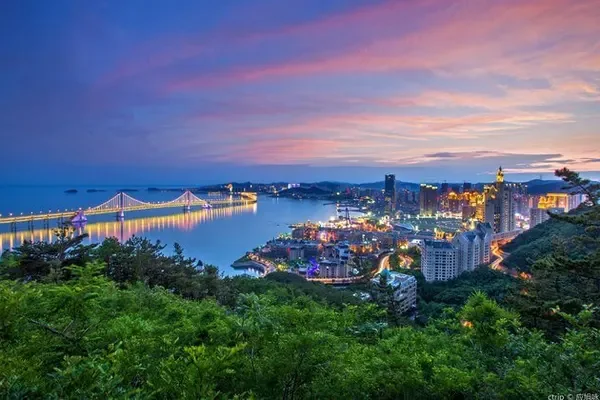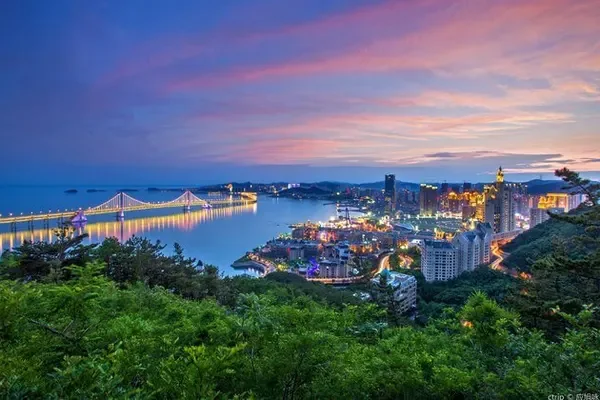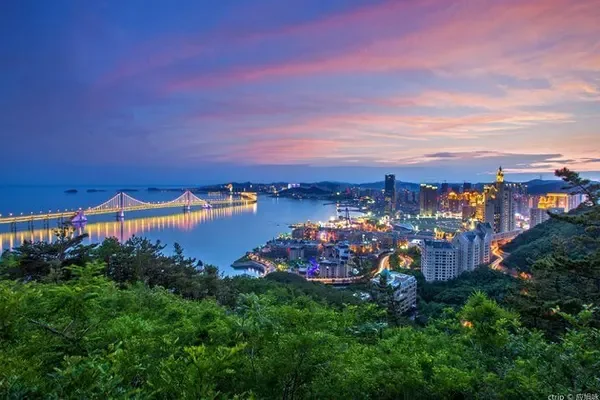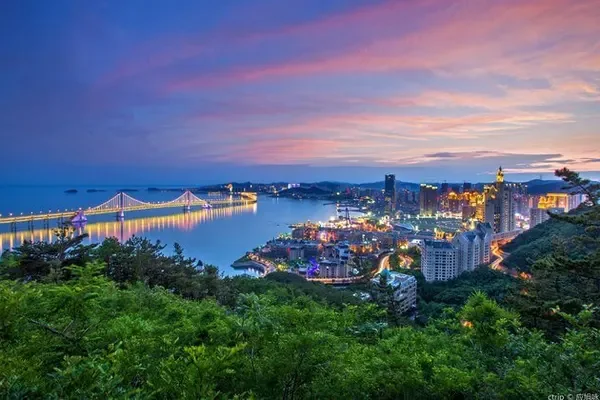
Autumn is here, and it’s time to enjoy the red leaves again. Once again, the dream of going to Xiangshan to view the red leaves, oh, it can also be called a wish. Because I have always hoped to enjoy the red leaves of Xiangshan in the golden autumn season, but this wish has not been realized. I grew up in Shanghai far away from Beijing, but I have a strong desire for Xiangshan. In this life, I must go to Xiangshan, one of the four maple viewing places in Beijing, to see the red leaves.
Xiangshan Park is a royal garden with a long history, rich cultural heritage, and mountain forest characteristics. It was built in the 26th year of Jin Dading. It is located in the western suburbs of Beijing and is a national AAAA scenic spot. There are many cultural relics and historic sites in Xiangshan Park, and pavilions and pavilions are scattered in the mountains and forests. The red leaves of Xiangshan, which was rated as one of the "Sixteen Scenic Spots of New Beijing", are well-known both at home and abroad, and become the strongest autumn color in the capital.

When you think of autumn in Beijing, you will think of red leaves. When you think of red leaves, you can’t do without Xiangshan. Xiangshan should be regarded as the best place to see red leaves in Beijing. It is very close to the city, and there are direct buses. Now there is a subway. It's so convenient.

Biyun Temple was first built in the second year of Yuan Zhishun (1331), formerly known as Biyun Temple. Located in the north of Xiangshan Park, the whole temple is built on the mountain, facing east from west. The whole layout is based on six courtyards arranged on the central axis, with a group of courtyards in the north and south, covering an area of more than 40,000 square meters. The first entrance to the courtyard is the Shanmen Hall. The two statues of Vajra Warriors in the hall are Buddhist gods guarding the gate of the temple, commonly known as the two generals of Hengha. There are bell towers and drum towers on both sides of the hall. The second courtyard is the Maitreya Buddha Hall, where there is a bronze Maitreya Buddha statue in the Ming Dynasty. The third courtyard is the Daxiong Hall, which is the main hall of Biyun Temple. The statues in the hall reflect the scene of Buddha Sakyamuni preaching scriptures.

Biyun Temple is a big temple, but also a big forest. In those yards of different sizes, there are trees or flowers and plants. There are many kinds of trees, many of which are towering old trunks that have lived for hundreds of years. Near the temple, on those highlands and mountains, there are quite a lot of trees.
dense.




Vajra Throne Pagoda This pagoda is modeled on the Vajra Throne Pagoda of Zhenjue Temple outside Xizhimen, Beijing, and is a memorial tower for Sakyamuni. All of them are made of white marble, with a height of 34.7 meters, which is the tallest among the existing Vajra Throne Pagodas in China. The base of the pagoda is square, with masonry structure, and the outside is covered with tiger skin stones. The upper layer of the tower base is the top of the throne, and there are eight stone towers on the throne.



Sun Yat-sen's memorial hall is set up here. On March 12, 1925, after the great forerunner of the democratic revolution Sun Yat-sen passed away in Beijing, he stayed in Biyun Temple in Xiangshan for four years. After the soul was moved to Zijin Mountain in Nanjing, Sun Yat-sen's Memorial Hall and Clothes Tomb were set up here for people to look up to. There is a bust of Sun Yat-sen in the main hall, and on the right side is a glass-covered steel coffin donated by the Soviet Union in 1925. The photos and historical sites of Mr. Sun Yat-sen in various periods are displayed indoors.




There is a stone bridge in front of the mountain gate of Biyun Temple. Close to the mountain gate is a pair of stone lions, squatting on Xumizuo.





The creepers along the stone bridge and the rockery in the yard in front of the spring yard seem to be getting autumn first, and their leaves are gradually turning yellow and then red.

Shuiquanyuan is a good place with quiet scenery in Biyun Temple. There are three pines and cypresses in the courtyard, and the most famous one is the three generations of trees. This is a rather strange ancient tree. There are long cypress trees in the middle of the cypress trees, and a neem tree grows in the innermost layer. The neem tree is still alive now. There is also a natural flowing spring in the courtyard, named "Shuiquan", also known as "Zhuoxiquan". The spring water flows out from the crevices of the stones and merges into a pool. The spring water is sweet and refreshing. Next to the spring is a rockery made of Taihu Lake stones. Flowers, trees, spring water and rockery constitute a beautiful and quiet courtyard garden.





There are 508 statues in Luohan Hall, all of which are carved in wood and covered with gold leaf. In the middle of the top of the Arhat Hall stands the pagodas and pavilions that symbolize the pure land of the West. There are four heavenly kings in the main gate, and the third Buddha in the center; there is a statue on each of the four passages: Wei Tuo in the east, Amitabha Buddha in the west, Ksitigarbha Bodhisattva in the south, and mad monk in the north. The crazy monk is the legendary crazy monk in Lingyin Temple who mocked Qin Hui. Ji Gong squatted on the roof beam in the north. According to folklore, on the day when Luohan Hall was ranked, Jigong came to Biyun Temple very early, but the gate had not yet opened. It happened that a playboy robbed the girl, and Jigong rescued the girl by fighting the injustice. When Jigong returned to Biyun Temple, all the seats were full, so he had to use the roof beams as seats. The five hundred arhats in the Arhat Hall are arranged in order. The seated statues are about 1.5 meters high. They are the same size as ordinary people, with different postures and vivid images. The senile.... . The image of five hundred arhats can be said to be a collection of Buddhist sculpture art. It is thought-provoking that among the five hundred arhats there are Emperor Kangxi and Emperor Qianlong. Emperor Kangxi is the 295th "Dark Night Arhat", and Emperor Qianlong is the 350th "Zhiford Arhat". Casting these two emperors as arhats is probably intended to promote the "divine right of kings" on the one hand, and to praise the prosperity of Kangxi and Qianlong on the other hand.



I went to visit Xiangshan Park alone, and I felt a lot of emotions. With infinite reverie in my heart, I imagined the magnificence of Xiangshan in autumn and the charming red leaves...

The main peak, Xianglu Peak (commonly known as Guijiansorrow), is 557 meters above sea level. There is a huge Rufeng stone on the top of the highest peak, which is shaped like a incense burner. At dawn and dusk, it is shrouded in clouds and mist. From a distance, it looks like cigarette smoke curling up in a furnace, hence the name Xianglu Shan, referred to as Xiangshan.

This time I climbed the mountain with the idea of admiring the red leaves. In my imagination, I should walk on the road covered with red leaves, and the red mountains and plains are reflected... But the reality is that I saw people all over the mountains, and only saw people on the mountain road. Crowded, I saw that there are some red leaves at the end, and it is estimated that there will be a large number of red leaves in a week. Now I feel that there are so many people, is it the best time to see red leaves?


Standing on the top of the mountain overlooking the earth, you can have a panoramic view of the pavilions and lofts below the mountain, including some modern buildings

There are many people on the top of the mountain, but it is a pity that the red leaves are not in season yet, and the mountain is full of emerald green, with a little blush in the middle of emerald green. a week!

I saw a little bit of red all over the mountains, and the forests were all dyed. After a while, the mountains and plains will be burning with red flames.





Mei Lanfang, the "Plum Stone" of Xiangshan, loves Xiangshan very much. Every time he comes to Xiangshan, he always stays in Yuxiang Pavilion. In the spring of 1922, when Mei Lanfang lived in the Yuxiang House in Xiangshan, one day, when he and some friends were playing in the mountains, he found a big stone with no inscription on it. On a whim, he wrote the word "Mei" on the boulder. The characters are 1.95 meters high and 1.9 meters wide, signed "Lanfang" at the bottom, and Li Shikan's inscription is engraved on the lower right. , Li Shikan came together, Lan Fang wrote about plums, and Shi Kan wrote an inscription. Although there are many tourists in Xiangshan, they may not be able to climb this stone, but they are proud of it." Below the inscription are five small characters "Qi Rushan Supervisor". It is called "Five Gentlemen Carved Stone", also known as "Plum Stone".










Under the sun, the red leaves are extraordinarily bright and colorful, and against the green and yellow next to them, they present colorful colors, just like an impressionist landscape painting.

Xiangshan Park is another unique beauty in Beijing. The red leaves of Xiangshan Mountain are the most beautiful scenery in the frosty autumn season.







On March 25, 1949, the Central Committee of the Communist Party of China entered Xiangshan, and Mao Zedong worked and lived in Shuangqing Villa. He commanded the famous battle of crossing the river here, prepared to build a new China, and opened a new page in Chinese history.



Red leaves have a unique character that is detached and refined. When the autumn wind rises from the sky, the vegetation withers, and the interpretation of fate has come to an end.

Red leaves have a valuable quality of "heavy frost, thicker color". Like all the leaves, the red leaves are originally buds of tender green hope, patches of verdant longing, clusters of fresh youth. After experiencing the erosion of wind and rain and the heat of the years, in the relentless autumn wind and the sharp frost, the red leaves know that they are about to wither and return to their roots. Before leaving the branch that raised it, it exerted all its energy, squeezed out all its nutrients, and exerted all its energy to ring the wind chimes at the end of its life, leaving the world with the most beautiful and brilliant "sunset red".





Looking at the red leaves of Xiangshan gave me a new understanding and understanding of red leaves, and I finally understood why the literati from ancient times to the present have a special liking for the red leaves of Xiangshan.


The red leaves of Xiangshan Mountain and the halls and temples complement each other, and they are always so beautiful and intoxicating.

The Palace of Qinzheng is the first of the twenty-eight scenic spots. It is a landmark building with the characteristics of a royal garden in Xiangshan. It is located in the east gate of the park. It is the place where Emperor Qianlong came to the park to temporarily handle government affairs and meet princes and ministers. , Diligent in ideological and political affairs. The Palace of Qinzheng was first built in the tenth year of Qianlong in the Qing Dynasty (1745).
In fact, the life of each of us is like a maple tree, which takes root, sprouts, grows strong, and gradually withers... But the tree can grow lonely without fame and fortune, and maintain a youthful and enthusiastic heart; Lost the nobility that should be given to life. Pieces of red leaves are swirling down, dancing not only nostalgia for life, but also calmness for death.



